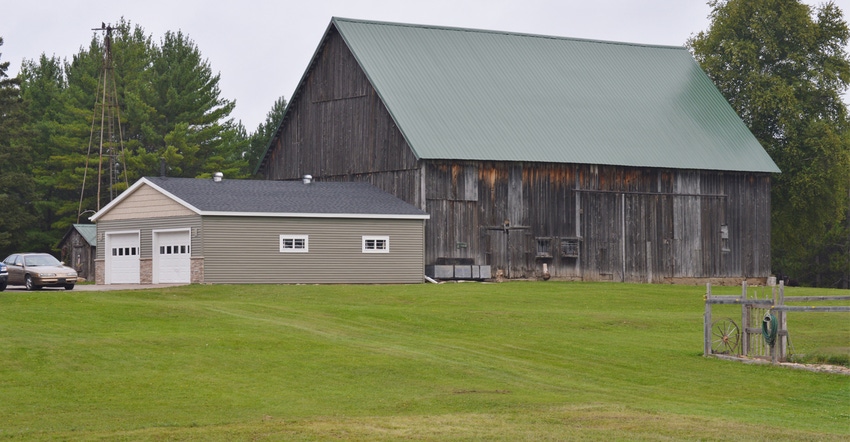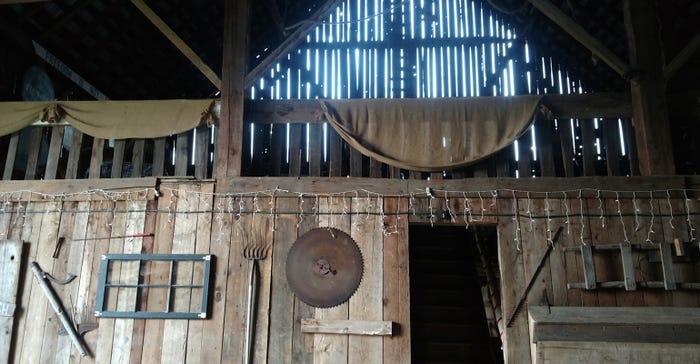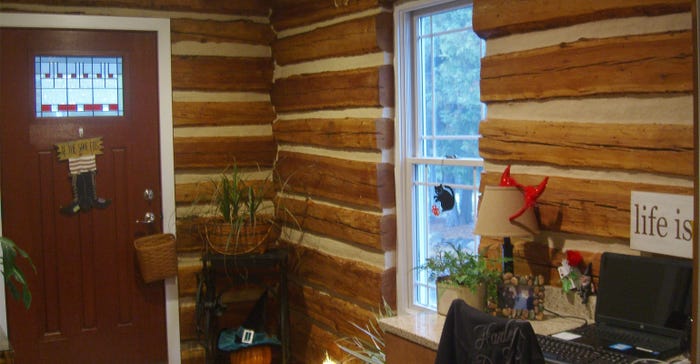October 2, 2017

Much is written about the circle of life and how spiritual energy flows from generation to generation and place to place.
Nowhere is that more evident than in the lives connected to Joseph Alphonse Kirschner and the farm he built in Powers, Mich.
The story could simply be told that Kirschner purchased his Upper Michigan farm in 1917, and it now belongs to his great-granddaughter Kerry LaBelle. But that would not be nearly enough.
Kirschner’s property consisted of a little log cabin, built around the 1880s, two barns and a silo. He and his wife raised cattle, pigs and the crops to feed them, expanding their operation to include a third barn, the largest of the three, built in 1920.
The log cabin was remodeled to become a two-story farmhouse, while the early outbuildings were torn down at some point, with the pig barn dismantled in the summer of 1973. By then, the farm was in the hands of son Joseph, and his wife, Ann.
“I was 10 years old that summer of ’73,” LaBelle, recalls. “I remember riding the tractor, ‘helping’ Grandpa Kirschner. Some of the wood from the pig barn was used to make the family hunting camp, and the rest was put in the loft of the big barn and saved.”

RECYCLE, REUSE: The loft railing is made from wood salvaged from a demolished pig barn. Owner Kerry LaBelle adamant about recycling everything she could with heritage in mind.

The big barn today maintains the same configuration it had in 1920. Horses pulling wagons of hay could be driven into the barn, with the cement flooring scored so the horses would not slip. The original grain bins with their chutes and paddles are still in place, as is the track and pulley under the roofline for raising hay to the mow.
Also intact are the gutters that once trapped manure behind hand-milked cows. The gutters were manually cleaned by shoveling manure into buckets that moved along a metal rail and then dumped into a wagon. The barn also contains two stalls for horses, a calf pen and a bull pen.
“As times changed and it was hard to make a living at farming, Grandpa became a large machine mechanic, and the farm was parceled off to family members,” says LaBelle. The barn became a storage facility.”
After having lived away from the Powers area for several years, she came home in 2011 and bought what remained of the farm.
“I recycled everything I could with heritage in mind, blending the old with the new,” she explains. “I saved original posts from a century ago and old tongue-and-groove bead boards from the porch. And the wood stored from the 1880s barn is in the barn now as a railing in the loft and as a wall. Original stairs from the farmhouse are used in the barn. Nothing has gone to waste.”
It was in the remodeling of the farmhouse that LaBelle discovered that the original log cabin was neatly hidden within. It is no longer hidden but is a beautifully visible blending of old and new.
“About a month after the house was finished, a storm peeled the roof off the barn. I remember Grandpa saying that when the roof goes, the barn goes, so I had the roof replaced. There was a reason I remembered his words,” she says.

HIDDEN TREASURE: When Kerry LaBelle started gutting the farmhouse, she found the original log cabin hidden inside.

LaBelle’s mother, Joanne, is the oldest of Kirschner’s seven children. She had wanted to have a barn dance when she was growing up, but with the barn being a working barn, her father didn’t see the sense in it.
“The week I moved to the farm, my parents celebrated their 50th anniversary,” LaBelle says with a laugh. “I was on a mission. We had a barn dance, the first of many!”
Today, LaBelle uses her barn and its array of outbuildings to host weddings and events, delighted that the barn’s unusually good acoustics are appreciated by bands and music lovers.
“There is a fine line between crazy and a labor of love,” she says. “What always drew me back to Michigan was family. Every vacation was spent at Grandma’s, the house I now live in. As a kid, being in the barn alone would scare me. Even as an adult I couldn’t get out of there fast enough. Then, one day, something came over me. A sense of peace, and I knew it was where I was meant to be.”
She adds, “Now when it is all lit up and I hear the music and laughter coming out of it, I forget about all the hard work it took to clean the old girl up and make repairs. I just think how happy my grandparents and great-grandparents would be to see her in use again, proud that she is still standing strong.”
At a family gathering in August, LaBelle’s 6-month-old grandson, James Mathew Folcik, a sixth-generation descendant of Joseph Alphonse Kirschner experienced his first barn dance. The circle of life continues.
Jan Corey Arnett writes from Battle Creek.
About the Author(s)
You May Also Like




